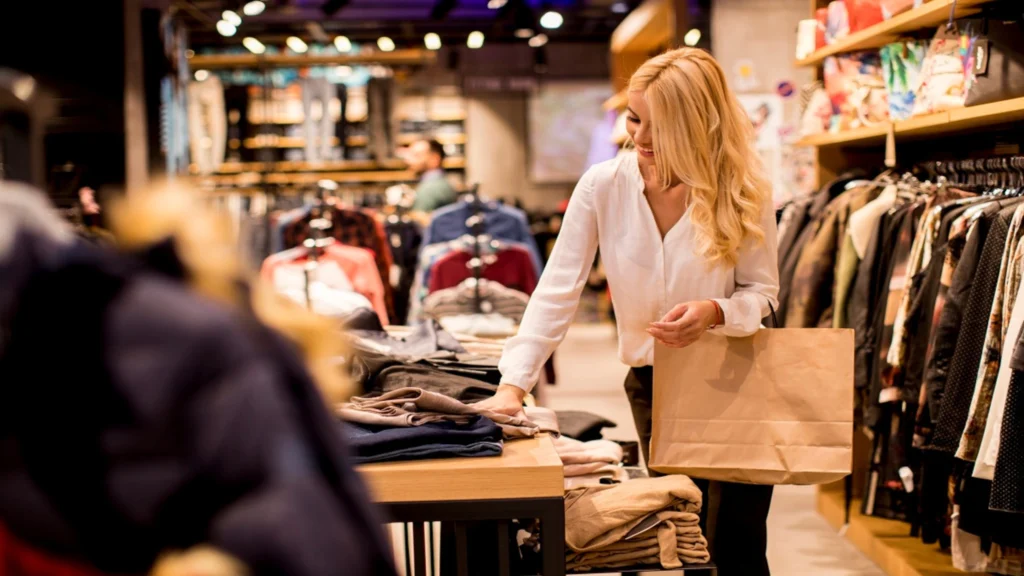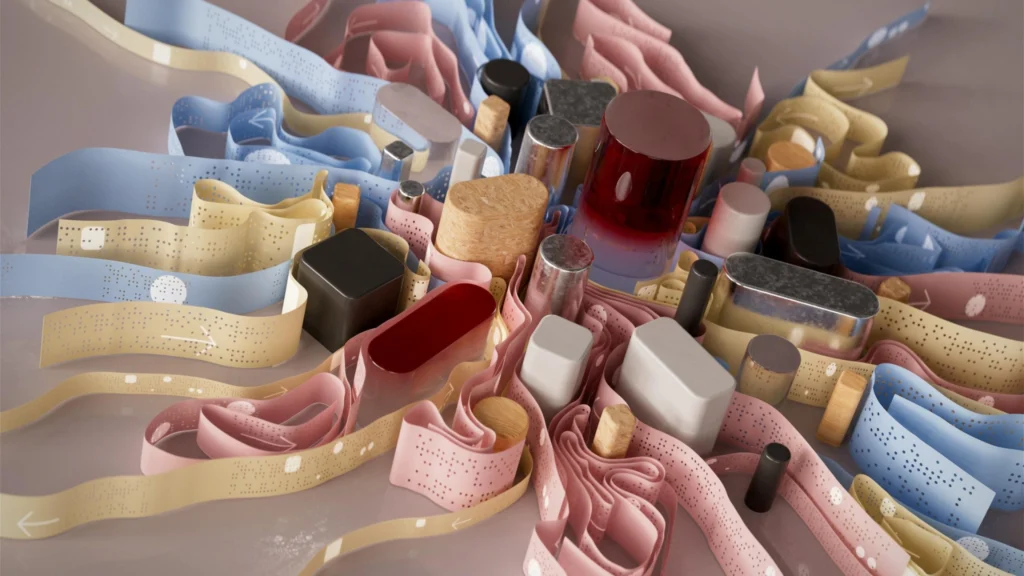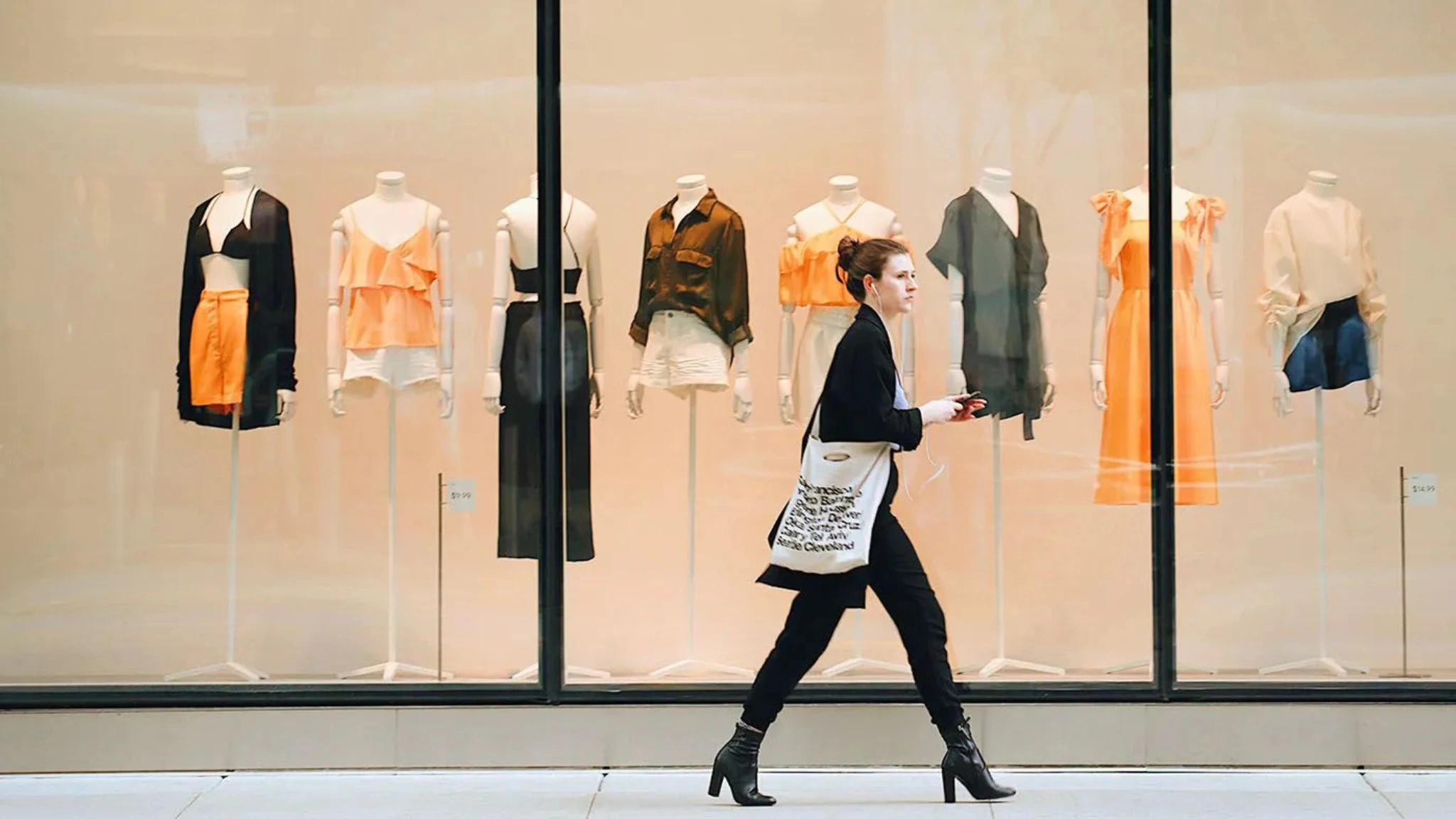Why Luxury D2C Fashion Brands Are Leaving Department Stores Behind in 2025
Ralph Lauren’s impressive 9% increase in direct-to-consumer sales and 1.7 million new D2C customers in Q3 2024 shows a fundamental change in luxury D2C fashion. Traditional department stores like Neiman Marcus and Nordstrom struggle with sales dropping 8% and 6.8% respectively, while luxury brands achieve remarkable success by connecting directly with their customers.
D2C sales now make up about two-thirds of Ralph Lauren’s business, which explains why many department stores’ luxury segments face challenges. High-income consumers lead this trend, with 31% of shoppers earning over $100,000 yearly choosing to buy directly from brand websites. Luxury brands that sell directly to consumers can offer premium products at better prices by cutting out middleman markups and keeping full control of their customer relationships.
The sort of thing I love about luxury brands in 2025 is how they’re moving away from department stores. Let’s look at the financial benefits and changing customer priorities that reshape the scene.
The Financial Case for Luxury D2C Brands

Luxury fashion brands are seeing compelling financial rewards from their direct-to-consumer models. Successful luxury D2C fashion brands reach gross margins between 50% to 85%. These numbers are much higher than traditional retail setups.
Higher Profit Margins Without Department Store Markups
Direct luxury brands have found a winning formula. They sell products above wholesale prices while keeping prices lower than retail. These brands give better value to consumers and still make solid profits. Traditional luxury brands made margins of up to 80% through department stores, but they shared these profits with retailers. D2C fashion brands now get the full margin potential by cutting out middlemen and offering competitive prices.
Luxury D2C Fashion: Reduced Operational Costs Through Direct Distribution
D2C fashion brands save money through streamlined operations. Industry analysis shows fashion companies that take an integrated approach to cost management cut expenses in several areas:
- Marketing and customer acquisition: 5-10% reduction in costs
- Logistics and distribution: 5-15% savings in addressable costs
- Overhead and indirect spending: 5-10% reduction, with some categories reaching 20%
Luxury companies with D2C channels manage inventory better and reduce storage costs and waste. Companies optimize their supply chains and cut sample waste through innovations like 3D design.
Better Inventory Control and Production Planning
Direct inventory control is a vital advantage for luxury DTC brands. Companies that manage their distribution can respond to customer demand live. This leads to a remarkable 40% reduction in waste. Customer data access helps brands make smarter production decisions and predict trends better.
The financial benefits go beyond immediate savings. High-end luxury brands that focus on D2C have found something interesting. A mere 5% improvement in customer retention can boost profits by 25% to 95%. Returning customers tend to browse more, spend more, and buy more often.
Technology Enabling Direct Consumer Relationships
Modern technology is the lifeblood that helps luxury D2C fashion brands build stronger customer relationships. MACH technologies (Microservices, API-first, Cloud-native, and Headless) help luxury companies control their first-party data and create tailored experiences at scale.
Luxury D2C Fashion: Advanced CRM and Data Analytics Capabilities
High-end luxury brands now rely on Customer Relationship Management systems. Data shows that brands using analytics see a 20% increase in customer retention rates. Advanced CRM implementations let luxury DTC brands track these vital customer data points:
- Purchase histories and priorities
- Cross-channel interaction patterns
- Customer feedback and behavior analytics
- Live engagement metrics
- Loyalty program participation
Brands like Gucci have implemented sophisticated CRM systems that deliver targeted marketing campaigns and customized product suggestions.
Virtual Shopping Experiences and Digital Showrooms
Luxury brands are creating trailblazing virtual showrooms that match their physical spaces. Brunello Cucinelli has adopted the NuOrder platform that makes shared digital wholesale processes possible. These virtual platforms let luxury companies showcase products with high-resolution images, 360-degree views, and detailed specifications.
Virtual showrooms have proven their worth with measurable results. The LVMH Prize digital showrooms drove a 35% increase in followers and a 400% surge in votes over four years. Direct-to-consumer fashion brands now use augmented reality experiences. Companies like Farfetch have introduced features such as ‘See it, Snap it, Shop it’ to enable visual product searches.
Personalized Marketing and Customer Service
Luxury companies deliver unmatched levels of personalization through advanced data analytics. Research shows that 77% of consumers prefer brands offering personalized services. This personalization increases business revenue by 5 to 15% through customized shopping trips.
AI-powered technology helps DTC fashion brands enhance customer experiences. They use machine learning and chatbots that provide tailored assistance based on past interactions. Best luxury brands like Burberry have implemented detailed programs such as Customer 360. This system uses RFID tags and mobile apps to merge data from online and offline channels.
Luxury D2C Fashion: Changing Luxury Consumer Shopping Habits

Consumer behavior in luxury fashion has changed dramatically. Fashion leads all luxury categories purchased online. Revenue projections show it will reach $20 billion globally in 2024.
Online Luxury Shopping Takes Off After Pandemic
Online luxury purchases have shown remarkable staying power, contrary to predictions about traditional shopping’s comeback. The U.S. market leads this trend and accounts for nearly one-fifth of global digital traffic to luxury websites. 132 million Americans buy premium goods online now, and this number should reach 157 million by 2029.
Buyers Want Smooth Digital Experiences
Luxury consumers expect sophisticated digital interactions instead of simple online catalogs. A newer study shows that 90% of consumers think luxury brands trail behind mainstream retailers in online experiences. 72% believe digital platforms can’t match physical stores’ prestige.
High-end shoppers now value:
- Virtual styling consultations
- AR try-on features
- AI-powered tailored recommendations
- Immersive digital environments
Direct Brand Relationships Matter More
Younger generations reshape luxury consumption patterns, moving away from traditional retail models. Buyers under 40 make up 40% of the luxury market. These digital natives connect better with brands through social platforms. 60% of North American affluent consumers actively recommend brands to their networks.
This goes beyond simple buying and selling. Modern luxury shoppers look for experiences that mirror their identity and values. Luxury brands invest heavily to create exclusive online spaces that protect their premium image. Notwithstanding that, the online luxury fashion market shows strong growth potential. U.S. sales should climb from $18 billion in 2024 to nearly $30 billion by 2029.
Luxury D2C Fashion: Department Store Challenges in 2025
Traditional department stores are dealing with major challenges in 2025. Their time-tested business model faces mounting pressures. The retail world has changed, which forces many decades-old retailers to rethink how they do business.
Declining Foot Traffic and Sales
The numbers tell a worrying story about department store visits. Neiman Marcus saw an 11.5% decrease in overall traffic during H1 2024. These numbers without doubt show what’s happening across the industry. Nordstrom’s story isn’t much better – they saw a 5.4% decline in visits because customers have different priorities now.
Sales figures paint an equally concerning picture:
- Macy’s physical store sales fell 7% in Q3
- Dillard’s total retail sales dropped 6% in Q3
- Overall retail sales went down 0.8% in January 2025
Vendor Payment and Credit Issues
Money problems at department stores have sent shockwaves through their supply chains. Luxury brands don’t get paid on time by major retailers. Saks Fifth Avenue’s recent USD 2.6 billion merger announcement revealed they owe hundreds of thousands to dozens of vendors. Brands have responded by:
- Making stricter order rules
- Stopping product shipments
- Demanding instant payment
Credit income used to bring in big profits but now causes headaches. Credit revenue made up 49% of Macy’s operating income and 44% of Nordstrom’s in 2022. Poor consumer credit health now threatens this vital money stream.
Competition from Digital Marketplaces
Department stores now fill less than half of all anchor spaces in enclosed shopping malls. About 500 spaces sit empty nationwide. Young shoppers have moved away from traditional department stores, which leads to big changes in retail.
More brands now sell directly to their customers, which makes things harder for department stores. Their sales have dropped 50% below their 2000 peak and stay 30% below 1980s levels. This shows how digital marketplaces and direct brand relationships now rule luxury retail.
Success Stories of Direct Luxury D2C Fashion Brands

Several luxury D2C fashion brands showed remarkable success after they embraced direct-to-consumer models. Their achievements are evidence that this approach works in the luxury market.
Case Studies of Traditional Brands Going Direct
The Clear Cut, a direct luxury brand specializing in diamonds, shows the D2C model’s full potential. This company started as a specialized service and achieved 108% quarter-over-quarter growth in volume organically. We focused on transparency and individual-specific experiences. The team created an educational series based on community feedback – the Wednesday Q&A and The Clear Cut Classroom.
Louis Vuitton stands as evidence of successful D2C transformation. The brand managed to keep its steadfast dedication to craftsmanship quality in direct consumer interactions. The luxury giant now targets metropolitan consumers aged 18-54 with annual incomes that exceed $75,000, and this shows a clear change toward younger luxury buyers.
Performance Metrics and Growth Statistics
The direct-to-consumer luxury market shows impressive growth metrics:
- The D2C e-commerce market reached $142.10 billion in 2022
- Projections indicate growth to $591.30 billion by 2032 at a CAGR of 15.4%
- Established D2C brands generated $135 billion in e-commerce sales in 2023
These numbers will climb higher, with established D2C brands projected to reach $187 billion in sales by 2025. Growth trajectory stays strong across traditional and digitally native brands.
Luxury D2C Fashion: Customer Satisfaction Improvements
Direct luxury brands boosted customer satisfaction through individual-specific experiences. Success comes from knowing how to control the entire customer trip. To name just one example, 82% of manufacturers report that direct selling improves customer relationships and experiences.
The personal luxury goods market hit a new record in 2023, with sales forecast to reach €362 billion by year-end. Customer satisfaction improved through:
- Better in-person interactions
- Uninterrupted physical and digital experiences
- Clienteling’s expanded role in sales
Luxury DTC brands found that there was a 25% to 95% profit increase from just a 5% improvement in customer retention. Returning customers browse more, spend more per transaction, and convert at higher rates. The mono-brand store model leads the distribution ecosystem, reflecting consumers’ desire for authentic brand experiences.
Conclusion
The luxury fashion industry has witnessed a defining moment as brands switch to direct-to-consumer models. Brands now enjoy higher margins and better inventory control. Customers benefit from customized shopping experiences and competitive pricing through this new approach.
Luxury retail has undergone an unstoppable transformation. Department stores, once the industry leaders, now face dwindling foot traffic and struggle with vendor payments. D2C luxury brands continue to show remarkable growth rates. Market projections indicate a surge to $591.30 billion by 2032.
Modern technology enables this retail evolution effectively. Luxury brands create meaningful customer connections through advanced CRM systems, virtual showrooms, and targeted marketing campaigns. The D2C model will likely dominate the luxury fashion landscape, especially when you have younger shoppers reshaping consumer priorities.
This trend will gain momentum as brands discover the value of direct customer relationships. Success stories from “The Clear Cut” and “Louis Vuitton” demonstrate how traditional luxury values flourish in a D2C environment. These brands deliver enhanced customer experiences and achieve stronger financial outcomes consistently.


